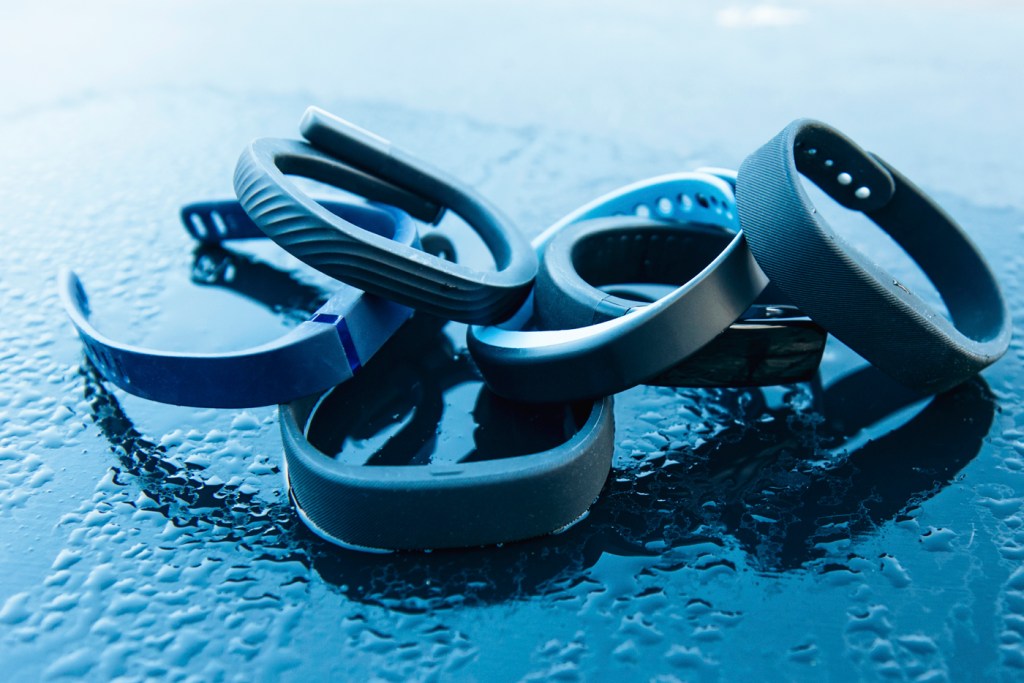Looking ahead: Fitness tech in 2015

Fitness trackers accounted for more than half of the 35 million wearable devices in use at the end of 2014, according to a report by global analyst CCS Insight.  Here, Stephen Intille, the co-founder of Northeastern’s personal health informatics doctoral program and an associate professor with joint appointments in the Bouvé College of Health Sciences and the College of Computer and Information Science, explains what we can expect from fitness tech in 2015.
Here, Stephen Intille, the co-founder of Northeastern’s personal health informatics doctoral program and an associate professor with joint appointments in the Bouvé College of Health Sciences and the College of Computer and Information Science, explains what we can expect from fitness tech in 2015.
Wearable fitness trackers, like the Jawbone UP3, FitBit Surge, and the forthcoming Apple Watch, promise to track your health 24/7 and help you reach your fitness goals. In your view, what devices will make the biggest splash in 2015?
In 2015 we are likely to see the introduction of even more watch-like devices that are capable of gathering fitness data but also serving other personal and productivity needs. Industry will compete to add an increasing number of sensors to the devices, measuring information such as body motion, location, heart rate, galvanic skin response (i.e., sweating), and skin temperature. The newest devices already have sophisticated input/output options, such as touch screens, radio frequency identification tags, and speech input, as well as audio and tactile output. The somewhat bulky devices introduced in 2013-14 will slim down and become more stylish, and developers will figure out user interface conventions that make the devices easier to use.
The biggest surprise in 2015 may not be how consumers use these devices for health, but rather an increasing awareness that the devices improve the utility of the mobile phone. A smartwatch that can automatically detect whether its user is walking, for instance, can make interaction with that person’s mobile phone more pleasant and efficient, such as by automatically changing availability states and the way in which people are notified of messages. The good news is that people will get in the habit of using these devices for everyday tasks, and that will create more opportunities to use the devices to also support health.
A recent study by PricewaterhouseCoopers found that 56 percent of respondents believe that average life expectancy will grow by 10 years due to wearable-enabled monitoring of our vital signs. With this in mind, what role do you think fitness trackers will play in the future of the healthcare industry?
Fitness trackers will definitely play a role in the future of our healthcare, as our “sick” care system transitions toward proactive, wellness-based care. Convenient, continuous, and autonomous data gathering on health-related behaviors will be necessary if we are to cost-effectively help hundreds of millions of Americans stay healthy and fit, while at the same time reducing their need for costly clinical and specialist care.
Nevertheless, the PricewaterhouseCoopers study is a somewhat troubling example of how industry and consumer enthusiasm for the commercial devices may exceed the scientific evidence demonstrating their effectiveness. Few well-designed studies have shown that use of wearable fitness technologies leads to long-term, sustainable health and sustained healthy behavior in the general population. In fact, anecdotal evidence suggests that many consumer fitness devices may be abandoned not long after purchase, relegated to the same drawers as pedometers, home exercise videos, food portion measurement cups, and weights. There is a risk that the public and business community will become prematurely disgruntled with the promise of wearable fitness technology before the truly novel uses and benefits of the technology are discovered and definitively proven. As researchers, we have our work cut out for us.
Your research focuses on how data acquired every day from miniature mobile and in-home sensors might be used to improve wellness via novel human-computer interfaces. What projects are on your 2015 to-do list?
We are working in two areas: improving health behavior measurement using mobile phones and wearable devices, and then using that information to create new just-in-time interventions that help people make and sustain desired behavior changes. In particular, we are exploring how mobile phones and smartwatches can be used to incrementally build up mathematical models of a person’s typical behavior so that we can identify habits. The phone or watch does what it can automatically, inferring some information about physical activity and sleep patterns, but it also asks for information from the person when it needs it. The trick is to figure out ways of doing this so that the user doesn’t feel burdened, even though the automatic sensing will never be perfect.
At the same time, we are developing ideas for how real-time knowledge of what the person is doing can be used to influence behavior by providing computer- and human-generated feedback timed precisely at actionable points of decision. Our goal is to create novel interventions that help people change habits and then maintain those habits for very long periods of time. We want to take advantage of the ability of the computer to patiently and ever-presently measure and model behavior and decision making, and then to use that information to intervene in a compelling way, just when a person is most receptive to help.





